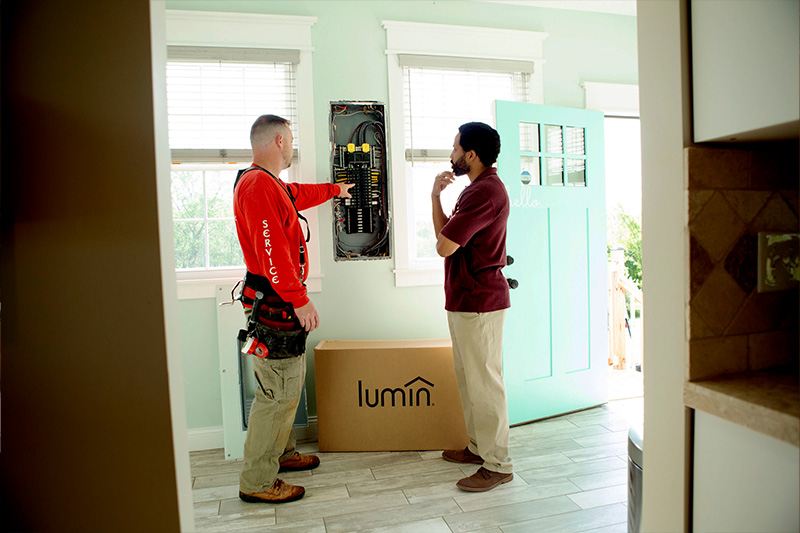We use cookies on our website.
Some of them are necessary for the functioning of the site, but you can decide about others.

If you're reading this, we'll assume we owe you a quick thank you. You're helping homeowners achieve true whole-home backup with the Lumin Smart Panel. Because the Lumin Smart Panel offers multiple features you can't find in other smart energy management solutions, we have a feeling that we won't be the only ones thanking you. To ensure that your customers have a great installation experience, we've put together a quick guide that you can use to help homeowners choose what circuits to sync with their new Lumin Smart Panel.
Let's start with the basics. The Lumin Smart Panel can connect with up to 12 circuits, but homeowners don't have to stop there. At Lumin, we've created a stackable solution to give homeowners more control during a power outage and beyond. In other words, they can easily add another Lumin Smart Panel, enabling for even more smart circuits if needed. And the Lumin Smart Panel can be retrofit into an existing home setup, making for a simple installation process. But for now, we'll focus on installing a single smart panel.
While the Lumin Smart Panel gives homeowners flexibility to manage their energy however they'd prefer, we have some recommendations on optimizing its performance. By assessing the homeowner's unique energy utilization, you can suggest the best setup based on their needs. And, by using the Lumin app, homeowners can choose from one of three different categories to organize the priority of their electrical loads. They include essential, optional and undesired.
The essential category will have the highest priority. This means that when the power is out, Lumin will work hardest to keep these appliances up and running. Loads in this category will never be shed. These loads might include a refrigerator or a CPAP machine.
Next is the optional category. This section will most likely host the largest number of appliances. The appliances organized in this category will be automatically turned off when the homeowner's electrical consumption is too high and puts the backup source at risk of overloading. To know which electrical load needs to be shed first, all optional appliances are ranked top to bottom, depending on their importance to the homeowner.
The best appliances for this category are those that automatically turn on and off in cycles. This would include a water heater or an air conditioner. Because these appliances use a lot of power to automatically turn on, it's a good idea to let the Lumin Smart Panel ensure that running them won't overload the backup source. This means the smart panel will measure and control these loads to prevent them from coming on simultaneously while also working within the backup source's limitations. Additionally, the optional category can respond to the remaining state of charge left in a battery and turn off non-essential appliances when the battery starts to run low, dramatically extending battery life during longer power outages.
The last category is undesired. Any electrical loads that will exceed the capabilities of the solar battery should be prioritized in this category. This is where most of your heavy hitters will sit. Anything in this category will automatically be disqualified from receiving any backup power, helping preserve the runtime of the power source. This includes loads that homeowners won't necessarily need during a power outage like a pool pump or hot tub. You'll also want to consider what consumes a lot of electricity and would likely lead to draining a battery quickly or even cause it to trip. However, it's worth noting that these loads can still be accessed at any time by the homeowner through the Lumin app.
While we've addressed what does make sense to connect to a Lumin Smart Panel, we have yet to mention what does not. Small loads that consume little energy are a small risk for draining or tripping power sources like a solar battery. Because of this, they are not recommended for connection to the Lumin Smart Panel. This includes lighting or wall outlets.
There are also devices that should never be connected to the Lumin Smart Panel because they would be at risk of being shed during a power outage. These include:
Each home is unique and so are the loads that power it. Helping homeowners determine how to prioritize their loads can have a lasting impact on their overall experience with solar, storage and energy management systems. We all know how powerful a good experience can be-- leading to repeat customers, referrals and a positive online reputation. The Lumin team has created several resources to help you as an installer. If you'd like to learn more, reach out.
Note: Medical equipment should be plugged into a dedicated medical backup power supply system to ensure operation in the event of a power interruption.